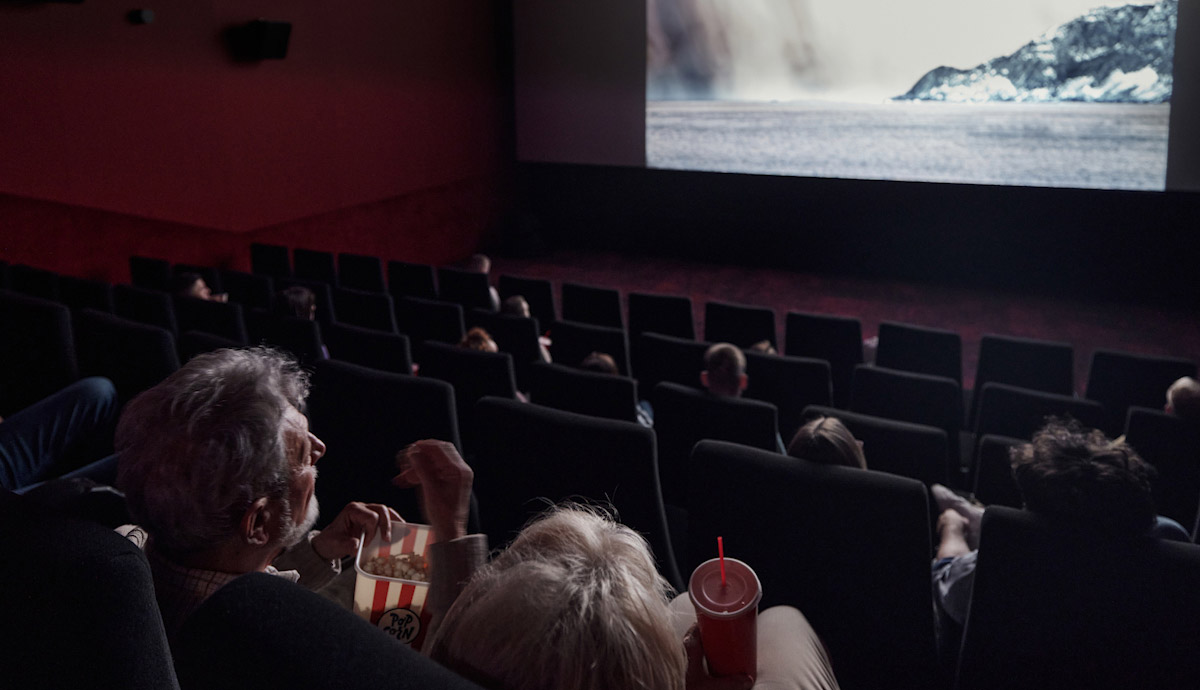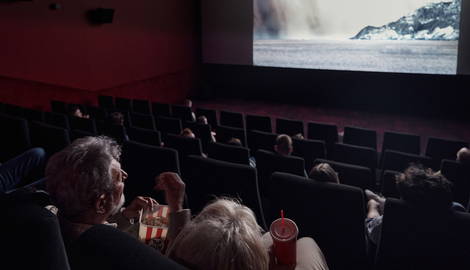
Concepts of film as grammar, syntax, code, rhetoric, or other facilities of language have frequently popped up in many works by highly esteemed film theorists, historians, and filmmakers. Still, whether film can be considered its distinct language system has yet to be definitively answered. An investigation into the validity of the claim that cinema is a language requires an extensive understanding of the functions of language and defining traits that allow for a system’s distinction and designation as such.
Film and Language: Start From Aristotle and Plato

The philosophy of language is a significant field of study for contemporary and ancient philosophers alike, though the latter tended to have less to say on the matter. Still, the insights these foundational thinkers have offered are worth discussing. Aristotle contended that spoken words are “symbols of affections of the soul, and written words are symbols of spoken words.” Aristotle also claimed that signs are universal, while written letters and spoken words differ for all humans. This controversial notion also establishes Aristotle’s contention that social practice acts as a catalyst for relation—namely, the relationship between the spoken and written word and the relationship between spoken word and psychological affection.
The discussion swirling around the theory of language and meaning was also pushed forth by Plato, particularly the theories of conventionalism and naturalism. According to the doctrine of conventionalism, words are signs conventionally determined through societal standards. This mode of thought suggests that the meaning of words is subject to change. Conversely, the naturalistic theory of meaning holds that words are naturally occurring signs that indicate extralinguistic entities.
The Philosophy of Language: Contemporary Thinkers

The philosophy of language as a discipline was accelerated through the work of contemporary thinkers—these philosophers worked to solve many of the contradictions of the philosophy of language through various means. For example, Derrida’s concept of différance refers to differences between text and meaning, expressing an opposition in identity between the two.
Frege attempted to solve the Principle of Identity substitution issue with the concept of sense, which helps explain the cognitive significance of a name or description and refers to language directed at the listener, the interpreter, the speaker, and the one being spoken to. Frege’s sentiment that contemporary philosophy of language and philosophical logic tends to elevate the belief that clarity of thought is hindered by natural language is echoed by Wittgenstein, who argued that language’s ambiguity makes it challenging to differentiate between speech aligned with clear thinking and speech that is not.
Linguistics and Saussure

While verbal and sound communication is an evolutionary trait intrinsic to most living beings, language is a complex, higher form of communication exclusive to humans. Swiss linguist and semiotician Ferdinand De Saussure contended that language is a human-made, social institution that operates as a structured system of conventional signs. Signs, as they are referred to throughout, are split up between a signifier (sound-image) and a signified (concept).
Much of linguistic study revolves around comparing the spoken and written word and, ultimately, the contentious argument of which form of communication is superior. While speech is heterogeneous, language is a homogeneous system of signs concerned with the union of meanings and sound-images. Saussure delineates speech from language and signals toward a cardinal aspect of signage: the psychoanalytic effect. He argues that the linguistic sign, rather than uniting a thing and a name, unites a concept and a sound-image, which is described not as sound itself but rather the psychological impression of the sound.
Symbolism and Psychoanalysis

Lacan’s three orders—the Imaginary, the Symbolic, and the Real—persist consistently within the psychoanalytic subject, forming interdependent registers. Lacan’s use of register is nebulous, suggesting an interpretation of the registers as distinct modes of expression. He hints at this understanding through references to confusions, conflations, or substitutions within a specific register, treating each as a language with patterns shaping its meaning.
This is where the similarities between film and the philosophical interpretation of language intersect. As Christian Metz writes in The Imaginary Signifier: Psychoanalysis and the Cinema, linguistics and psychoanalysis emerge as sciences focused on the immediate object of signification, operating within the realm of the symbolic. Psychoanalysis draws heavily on illusion, allusion, perception, and deception. Consider the foundational facet of psychoanalysis: the study of dreams. Universally considered symbolic, dreams operate on a plane extremely divorced from reality, though influenced by it.
The Imaginary Signifier and Metaphor

A chief contributor to the unreality of cinema is the concept of the viewer as an imaginary signifier. Film shares similarities with the primordial mirror, yet it distinguishes itself by never reflecting the spectator’s body. The usage of connotation and metaphor outlines the similarity between language and film. First is the relationship between the denotative signifiers and significates, and the relationship between connotative signifiers and significates. Denotation is motivation by analogy or similarity between signifier and signified.
Connotation

Connotation is also motivated, but less so on analogy; Metz offers the cross as a symbol of Christianity: the cross is seen as the de-facto symbol of Christianity. Despite other symbols and images being associated with the religion, the cross has ascended as the most recognizable image of Christianity. Metz writes: “Many filmic metaphors are based more or less directly on an underlying metonymy or synecdoche.” Metz continues, distinguishing metonymy (direct contact) and metaphor (similarity), expressing a preference for the latter, as connections rooted in congruity, potential origins for metonymy, are considered “given” or “external,” while those grounded in resemblance are always somewhat “invented” and “latent” in nature; thus, metaphor possesses a more “inspired” quality compared to metonymy.
Visual Image as Word, Editing as Literary Syntax

In Film Language, Edward Hudlin, referencing other scholars, suggests images in Cinema can be understood as “primitive iconography.” An example is the use of actors, often chosen based on appearance and possessing “certain emotional and intellectual associations for an audience with normal social conditioning.” These long-standing real-life and referential contexts allow filmmakers to impart important characteristics onto characters quickly and thus the audience through a subconscious association. Huldin suggests that filmic images are already emotionally and symbolically funded allowing filmmakers to “manipulate these visual symbols presumably as one does words.”
Hudlin recounts Pudovkin’s analogy comparing film production to bricklaying, where each brick, or visual image, is compared to a word, and the linkage between bricks or editing is likened to literary syntax. However, Hudlin points out inconsistencies, highlighting that, unlike bricks, the meaning of a word shifts with context.
Cinematic Shots vs Linguistic Word

Metz outlines the differences between shots and linguistic words: 1) Shots, contrary to words but like statements, can be formulated in a verbal language; 2) Shots are creations of the filmmaker, unlike words that already exist in a lexicon; 3) Unlike the word, the shot presents the receiver with undefined information; 4) The shot is an actualized unit of discourse, and the word is a virtual lexical unit; 5) A shot only assures its meaning compared to other shots; the word is always part of a semantic field. Thus, the filmic shot resembles a statement rather than a word.
As previously discussed, speech and language are not analogous. What, then, is film—a medium that contains both? Further, can film itself be considered a language despite incongruities with the accepted terms necessary for designation as such? Calvin Pryluck writes in The Film Metaphor: The Use of Language-Based Models in Film Study: “Phrases like ‘the grammar of film’ are harmless enough conceits when they are used metaphorically or as a claim to some kind of prestige. Words like ‘semantics’ and ‘syntax’ may be useful subsuming concepts for meaning and structure within any sign system.”
Film Defined by Linguistic Terms

Linguistic terms used to describe film often cause more confusion surrounding the subject than a sense of clarity and understanding. Using linguistic terminology can distort the analysis of fundamentally different sign systems. Additionally, Prylock explores the directionality of words in verbal metaphor, highlighting that while shots in a montage lack a direct connection, similar to words in verbal metaphor, linguistic syntax imposes constraints on word sequencing. Language modification is both syntactical and unidirectional, highlighting the contrast between non-directional film juxtapositions and unidirectional verbal metaphors as “further evidence that superficially at least language and film differ with respect to form classes such as nouns and adjectives.” He continues, questioning what is gained by using this terminology even as an analogy.
Metz writes, “The image is like a word, the sequence is like a sentence, for a sentence is made up of images like a sentence of words, etc. by assuming this position, the cinema, for all its proclamations of superiority, was condemning itself to perpetual inferiority.” He continues, going as far as to implicate cinema as a mere copy of language: “In contrast to a refined language (verbal language), it defined itself unwittingly as a coarser duplication.”
Film As Language

Though there have been attempts to designate film as either a language or language system and later a rhetoric or grammar, both attempts are inconclusive. Perhaps the application of linguistic terms in the study of film is misguided, as the terminology is already debated within its original context. It would seem that the medium of film, while containing similarities to language, is too complicated to fit neatly into the parameters that would earn its distinction as such.
Metz writes: “The image is like a word, the sequence is like a sentence, for a sentence is made up of images like a sentence of words, etc. by assuming this position, the cinema, for all its proclamations of superiority, was condemning itself to perpetual inferiority.” He continues, going as far as to implicate cinema as a mere copy of language: “In contrast to a refined language (verbal language), it defined itself unwittingly as a coarser duplication.”
A more fruitful endeavor would be the establishment of a glossary of terms specific to cinematic study. However, the lack of designation as a language does not signal its inferiority. Instead, film has the ability to transcend language and imbue meaning and signification in a manner that visuals, language, or speech alone cannot replicate.








